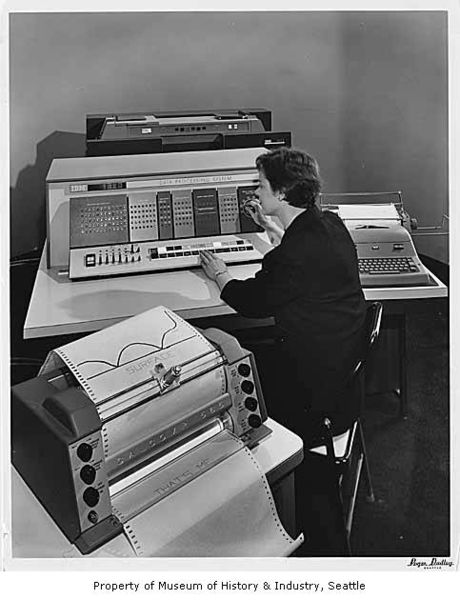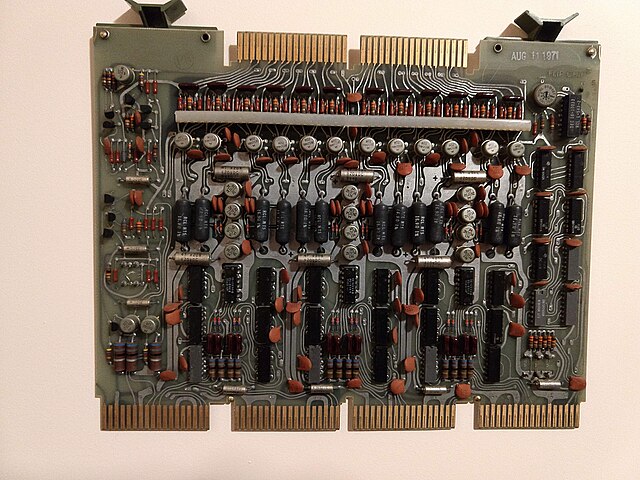The IBM 1620 was announced by IBM on October 21, 1959, and marketed as an inexpensive scientific computer. After a total production of about two thousand machines, it was withdrawn on November 19, 1970. Modified versions of the 1620 were used as the CPU of the IBM 1710 and IBM 1720 Industrial Process Control Systems.
IBM 1620 Model I, Level H
IBM 1620 data processing machine with IBM 1627 plotter, on display at the 1962 Seattle World's Fair
IBM 1620 SPS card
IBM 1627 drum plotter
Magnetic-core memory is a form of random-access computer memory. It predominated for roughly 20 years between 1955 and 1975, and is often just called core memory, or, informally, core.
A 32 × 32 core memory plane storing 1024 bits (or 128 bytes) of data. The small black rings at the intersections of the grid wires, organised in four squares, are the ferrite cores.
Project Whirlwind core memory
Close-up of a core plane. The distance between the rings is roughly 1 mm (0.04 in). The green horizontal wires are X; the Y wires are dull brown and vertical, toward the back. The sense wires are diagonal, colored orange, and the inhibit wires are vertical twisted pairs.
One of three inter-connected modules that make up an Omnibus-based (PDP 8/e/f/m) PDP-8 core memory plane.








